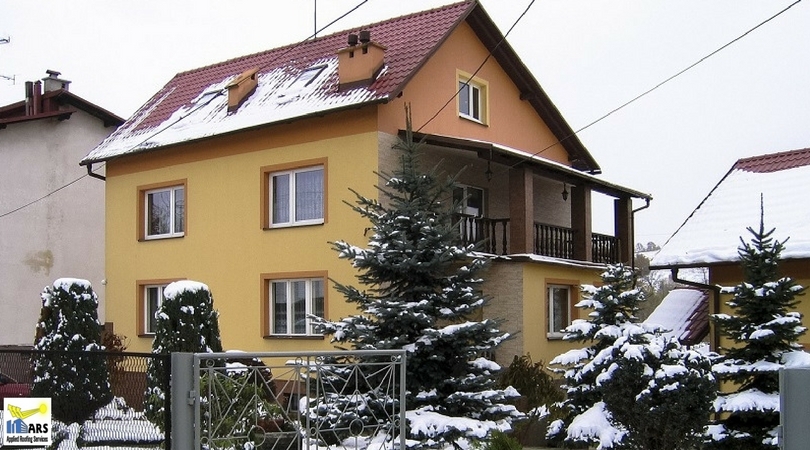


Preventing a bad situation before it occurs is crucial to minimize the amount of damage and expenses that it causes. Your roof isn’t an exception and any tiny leaks or problems that you can locate in advance, before letting it manifest into a major trouble, will save you time and money.
During the winter season, problems with your roof are more frequent due to the weather. Big storms and changes in temperatures can have a severe impact on your roof as well as the roofing materials. You need to prepare ahead to combat the damaging effects of wind, snow and ice on your roofing during winter.
Here are some of the most common causes of roof damage in the winter and important tips to prevent or quickly repair these damages, so that your roof stays winter-proof throughout the season.
Water trapped in your roof can be severely problematic during the cold months and may eventually lead to leaks and damage. Once the trapped water gets absorbed by roofing materials, they tend to freeze and expand which form cracks. If left unchecked, this process can keep on recurring and the damage inflicted on the roof will multiply.
To avoid water getting confined in your roof, make sure to have a properly ventilated roof. Locate and fix any existing minute gap or leaks immediately to keep water from getting inside at those points.
Falling icicles not only pose danger to animals and people, but they are harmful to the health of your roof. Icicles are notorious for pulling down parts of your roof including gutters. Suspended icicles can be very heavy due to which your roof can be under stress and prone to rotting.
The best way to prevent icicles formation is to keep your gutters clean. Also, applying heat tape outlining the seams, prevent ice formation.
Powerful winter winds can damage your roof by weakening your shingles and pushing them away from your roof.
Replace shingles or other damaged pieces of your roof that have turned loose or have been displaced by a storm, immediately. This will maintain the proper condition of your roof and prevent damaging effects of trapped water or leaks. Trim all those tree limbs that are within close proximity to the roof before they cause any problems.
Ice dams are formed as a result of thawing of snow and ice on your roof due to internal heat emitted from your house which gets collected in cold areas and later freeze into a solid mass of ice. These dams can keep melted water from passing off your roof, leading to roof leakage due to water accumulation.
You can prevent ice dams by blowing cold air from inside the house against the roof which will keep snow and ice from thawing. Heat tape can be helpful in preventing dams from forming along roof boundary to avoid a runoff.
Leaks are a major issue during the winter months due to the rain and snow accompanying this season. Luckily, there are preventative measures you can take to secure your roof from developing a leak. Here are some steps you can take to avoid your roof from getting severely damaged this winter:
Keep your roof clean throughout the year. The major reason for roof leaks is debris. Big amounts of debris including branches, sticks, and leaves will build up in overhangs and block your gutters. Hire a professional to remove your roof debris as soon as possible.
If there are trees in your yard, ensure to get the branches dangling over your roof trimmed regularly. This will prevent the leaves and debris from dropping and piling up onto your roof.
Your gutters should be regularly cleaned. Once they get clogged with water due to debris accumulation, it will lead to freezing of water and formation of ice dams. Due to this, you may face trouble in your attic and the top floor of your house.
Ensure to have a well-insulated attic because it's an ideal way to avoid roof leaks during the onset of thawing of the cold weather. Insulation helps in buffering the temperature variation and prevents excessive dampness of your roofing materials.
Get a yearly roof inspection. Professional roofing personnel will perform a complete inspection of shingles, flashing, and gutters to rule out any signs of damage or leaking.
Your roof is a significant part of your home that protects you all year around especially during the harsh winter months, so ensure to secure your roof this winter from damage.
Related Post: 9 End of Summer Roof Maintenance Tips to Get Your Home Fall-Ready